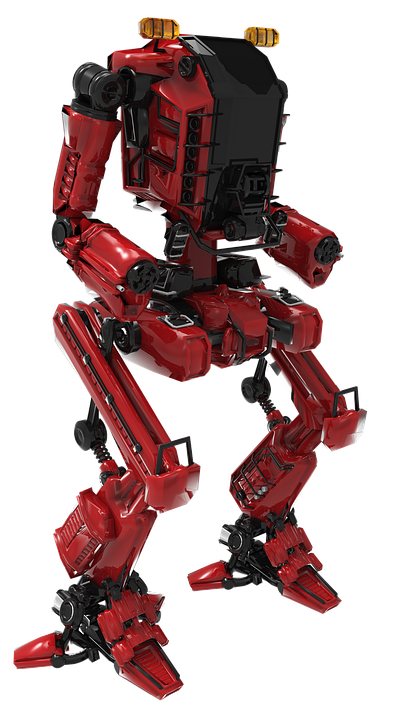Here is an article based on your request.
Beyond the Assembly Line: The New Age of Robotics
For decades, the word “robot” conjured a specific image: a hulking, mechanical arm, caged off from humans, performing a single, repetitive task with brute force and precision on an automotive assembly line. It was a symbol of industrial might—powerful, efficient, but ultimately mindless. That image, however, is becoming a relic of a bygone era. We have entered a new age of robotics, one that is moving far beyond the factory floor and into the most intricate corners of our lives.
This isn’t just an upgrade; it’s a fundamental paradigm shift. The robots of today and tomorrow are no longer just programmed machines. They are becoming intelligent, adaptable, and collaborative partners, powered by a convergence of artificial intelligence, sophisticated sensors, and innovative design. This quiet revolution is redefining what a robot is and, more importantly, what it can do for humanity.
The Brains Behind the Brawn: AI and Machine Learning
The single greatest catalyst for this new age is artificial intelligence. Yesterday’s robots were programmed with explicit instructions: “Move to coordinate X, Y, Z; grip; rotate; release.” They could not deviate from this script. If a part was misaligned, the robot would fail, or worse, break something.
Today’s robots learn. Equipped with advanced computer vision and a suite of sensors, they perceive and interpret the world around them. Through machine learning, they can be trained on vast datasets to recognize objects, predict outcomes, and adapt to variability. A modern warehouse robot doesn’t need an object to be in a precise location; it can identify the item in a cluttered bin, determine the best way to grasp it, and move it without collision. This cognitive leap is the difference between a tool and a teammate. It’s the digital nervous system that allows robots to be flexible, problem-solve, and operate safely in dynamic, unstructured environments.
The Collaborative Coworker: The Rise of “Cobots”
Perhaps the most visible sign of this new era is the robot that has escaped its cage. Collaborative robots, or “cobots,” are designed to work safely alongside humans, sharing the same workspace. Lightweight, equipped with force-limiting sensors that make them stop on contact, and easily programmable, cobots are not replacing human workers—they are augmenting them.
Imagine a technician on an assembly line. Instead of repeatedly lifting a heavy component, a cobot presents it at the perfect height and angle, eliminating physical strain and freeing the technician to focus on the delicate, high-skill task of fitting and quality control. In a laboratory, a cobot can meticulously handle thousands of samples, reducing human error and freeing up scientists for analysis and discovery. Cobots are a human-centric evolution, designed to take over the dull, dirty, and dangerous tasks, allowing human talent to be applied to creativity, critical thinking, and complex problem-solving.
From Factory Floors to Hospital Halls and Farm Fields
While manufacturing remains a core domain, the new age of robotics is defined by its expansion into entirely new sectors.
-
Healthcare: In operating rooms, surgical systems like the da Vinci robot provide surgeons with magnified 3D vision and instruments that can bend and rotate far beyond the capabilities of the human wrist. This enables more precise, less invasive procedures. Elsewhere in hospitals, autonomous robots are disinfecting rooms with UV light, delivering medication, and helping lift and move patients, reducing the physical burden on nurses.
-
Logistics and E-commerce: The modern warehouse is a ballet of autonomous mobile robots (AMRs). These machines zip across floors, bringing shelves of goods to human pickers or sorting packages for shipment, enabling the incredible speed and scale of today’s commerce. The next frontier is already in sight, with companies testing last-mile delivery robots and drones to bring packages directly to our doorsteps.
-
Agriculture: “Agri-tech” is deploying robots to solve pressing challenges like labor shortages and the need for sustainable farming. Drones equipped with multispectral cameras monitor crop health from above, while ground-based robots can identify and remove weeds with pinpoint precision or harvest delicate fruits without bruising them.
-
Exploration and Services: From the Perseverance rover navigating the Martian landscape to deep-sea drones exploring hydrothermal vents, robots are our proxies in environments too hostile for humans. Closer to home, they are beginning to appear in hospitality, retail, and even construction, performing tasks from mixing drinks to laying bricks.
The Human Element: Challenges and the Road Ahead
This rapid evolution is not without its challenges. The conversation around job displacement is more critical than ever. While new roles in robot maintenance, programming, and supervision are emerging, a societal commitment to reskilling and education is essential to ensure a just transition.
Furthermore, as robots become more integrated into our daily lives, we face profound ethical and social questions. How do we ensure the security of these connected devices? How do we manage data privacy when a robot is equipped with cameras and microphones in a hospital or a home?
The new age of robotics is ultimately not just about building better machines. It’s about forging a new relationship between humans and technology. The assembly line robot was a tool to replace human muscle. The new robot is a partner designed to enhance human intellect and capability. We are moving from a world of automation to one of augmentation. The future isn’t a world run by robots, but a world built with them, side by side.

